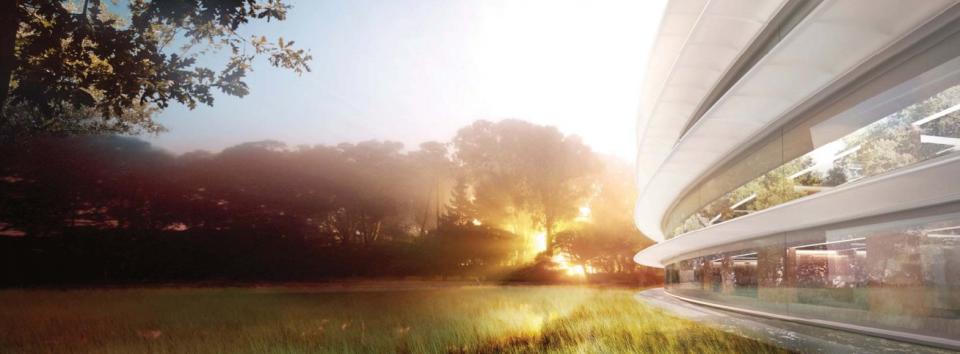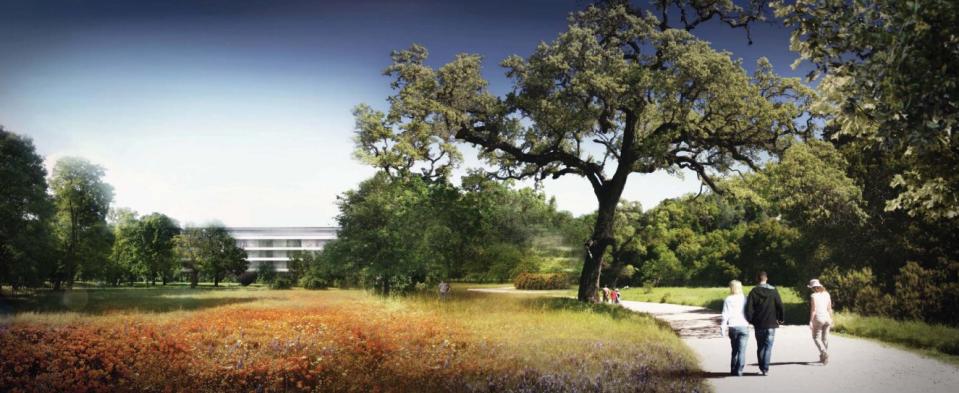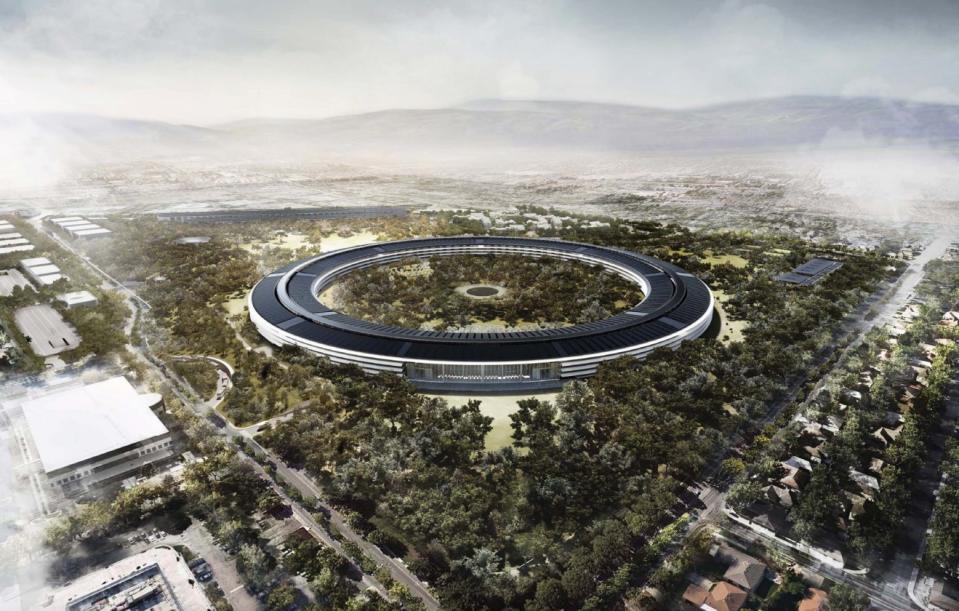Apple's New Campus Has Cutting-Edge Features That Will Amaze You
By Nick Mafi. Photos courtesy of Apple.
Apple Park, the tech giant's soon-to-be-completed new headquarters, was the final vision of the firm's inimitable founder: Steve Jobs. So invested in the project was Jobs that his final public appearance before his death on October 5, 2011, was addressing a group of Cupertino council members to pitch his vision for the 175-acre plot of land that would house his company for the next century. "We've come up with a design that puts 12,000 people in one building," said Jobs during the address. "We've seen these office parks with lots of buildings, and they get pretty boring pretty fast...so we're going to do something different from that." Apple chose Norman Foster, a Pritzker Prize–winning architect who has been responsible for some of the most innovative buildings on the planet.
Steve Jobs's inspiration for the new headquarters came in 2004 while he was walking through Hyde Park in London. It was there, in the open, in nature, that Apple's former CEO decided it was necessary to house his company in a new environment where the barrier between building and nature seamlessly disappeared. Yet, more than that, and much like his revolutionary iPhone, Jobs wanted to create the kind of campus that other companies would aspire to in the decades to come. Below, AD covers some of the most cutting-edge features of Apple's newest headquarters—a project so vast and exciting that it consumed the final months of Jobs's life.
Energy Efficient: The Ring, as the structure has come to be known, has the ability to run on fully sustainable energy, much of which comes from the solar panels that line the top of the spaceship-like structure. What's more, the campus will house a cluster of various trees, many of them fruit-bearing. The foliage is not merely for aesthetics, however: They will all be drought-tolerant varieties, planted to withstand climate change.
All-Glass: The glass exterior, part of Jobs's original vision, succeeds in blurring the lines between office and nature. To achieve this, Apple hired the German firm Seele Group (the same company that outfitted the famous all-glass exterior of Apple's Fifth Avenue location in New York City). The company produced roughly 800 glass panels that are 45 feet tall, extremely durable, and curved to fit the contours of the ring-like structure.
A Campus Filled with Foliage: Jobs felt his best thinking was done while walking, specifically walking through nature, so he wanted to offer his employees the same creative freedom. To do so, Apple bought some 9,000 trees (many of them apple, plum, apricot, and other fruit trees) to plant throughout the 175-acre plot of land. The result is a corporate campus that, at times, might be mistaken for a state park.
A Building That Breathes: Between each floor of the building is a canopy that juts out, mainly to protect employees from the intense California sun. Tucked within each canopy is a ventilation system that funnels air in and out of the building. Apparently Jobs, who was not a fan of air conditioning, wanted his employees to feel any passing breeze as if they were sitting outside. Through a variety of sensors, the building can maintain a temperature of 68 to 77 degrees Fahrenheit, all by using an intake and release of natural air.
More: 5 Examples of Iconic Modern Architecture That Have Serious Flaws
This story originally appeared on Architectural Digest.
More from Architectural Digest:
Nate Berkus Shares New Daughter/New Home
Inside Khloe and Kourtney Kardashian's California Dream Homes
Inside Jennifer Aniston's Gorgeous Beverly Hills Home



